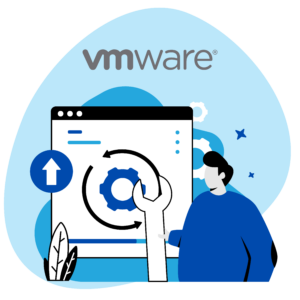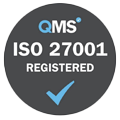Infrastructure is an integral part of any business, so having end-to-end visibility across your IT stack can help prevent outages, reduce service degradation and improve operational efficiency, by reducing the risks of any unplanned downtime.

Hardware Monitoring – Provides powerful insight to monitor multi-vendor hardware, such as CPU, RAM, battery life data, power and load sensors. Real time alerts, ‘Up’, ‘Warning’, ‘Critical’, will enable prompt remediation as well providing historical performance analysis, allowing you to plan ahead armed with the right information at your fingertips. Effective monitoring of your assets also allows you to set baseline parameters for each piece of hardware, ensuring adequate time for remediation, which is key if you are reliant upon third parties to deliver new hardware.
Network Monitoring – This helps to verify that your organisation’s internal network is functioning effectively and delivering the expected levels of speed and performance you expect. This will help you to stay ahead of latency complaints from your users and more importantly, stay ahead of any potential outages by allowing you to detect and fix issues faster! This ultimately leads to improved ROI and potential downstream cost reductions on your infrastructure and associated hardware and software peripheral devices.


Application Monitoring – Application monitoring will keep you informed when there is a degradation in service with one of the applications on your network or their related databases, email system, etc, etc. The type of historical data and trend analysis you receive will help you to make better decisions during the lifetime of the application as well as when contracts expire with your supplier, helping you to either move to another provider or negotiate more competitive renewal terms. It is another essential piece of the puzzle, keeping you informed and armed with the information you need to reduce latency and downtime within your organisation.
Cloud Monitoring – Most organisations infrastructure is already either partially or fully in the cloud and this is not set to change anytime soon. The reliance on the cloud is therefore critical in so many ways, so it makes sense that you have the right tools to monitor this activity and be able to review and manage operational workflows and processes within your cloud environment. Effective cloud monitoring encourages reduced downtime and allows you to have a firm grip on areas such as data security, APIs, servers, and storage, to name a few. The move to the cloud for many businesses has been in tandem with regulators demanding end-user data be adequately protected, with eye-watering fines for those who adopt a casual approach, so monitoring your assets in the cloud should not be deemed as a ‘nice to have’ but a necessity in today’s environment!
Zuri Technologies Infrastructure Monitoring
Our Infrastructure Monitoring is a cloud-based solution that provides you with transparency over your assets, including, but not limited to, servers, networks, computer hardware, and software, all on one unified automated monitoring platform. Our team of engineers has a full ‘eyes-on’ approach and has access to your estate allowing them to act swiftly to remediate problems before they become service impacting affecting your end users.
This solution ultimately helps your business to prevent outages and optimise your IT infrastructure as well as to ensure all your devices are performing as optimally as possible. The early warning capabilities mean we are in a position to act swiftly and can escalate problems or exercise workflows, promoting productivity and performance.








